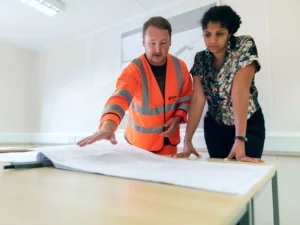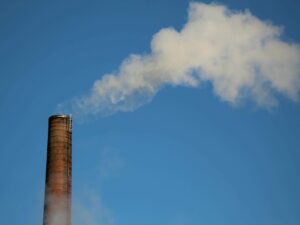
Soil Contamination: How Comprehensive Soil Testing Protects Public Health and the Environment
Soil contamination is a big problem. Harmful substances, like heavy metals and chemicals, are polluting land. This land is used for farming, construction, and other human activities. Polluted soil harms plants, animals, and people, posing significant risks to public health and ecosystems.
Fortunately, comprehensive soil testing can identify these hidden dangers, guide cleanup efforts, and ensure safe, sustainable land use. This article looks at the risks of soil contamination. It discusses the importance of soil testing. It also explains why correction and monitoring programs are vital for long-term environmental health.
What Causes Soil Contamination, and Why Is It Dangerous?
Tainted soil can cause serious health problems and disrupt ecosystems. Some of the most common risks include:
Heavy Metals
Metals such as lead, mercury, and cadmium enter the soil through mining, industrial waste, and pollution. Prolonged exposure to these metals can affect brain function, damage organs, and even cause cancer if they enter the food chain or water sources.
Chemical Pollutants
Chemicals like pesticides, fertilizers, and industrial solvents can seep into the ground, making the soil toxic. These pollutants may harm crops, animals, and groundwater, posing a direct risk to human health.
Impact on Farming
Soil pollution reduces crop yield and quality. Plant growth in polluted soil may absorb harmful substances, which can enter the food supply and endanger consumers. Poor soil health also makes farming unsustainable in the long run.
Harm to Ecosystems
Contamination disrupts the delicate balance of ecosystems by killing beneficial insects and microorganisms. This can lead to biological diversity loss and negatively impact wildlife dependent on the land.
How Soil Testing Identifies Hidden Dangers
Soil testing plays a crucial role in identifying and managing contamination. Here’s how it works:
Sampling and Laboratory Analysis
Soil samples are taken from various areas on-site and analyzed in laboratories for pollutants such as heavy metals, pesticides, and hydrocarbons. Testing provides an accurate picture of the pollution levels and the types of pollutants present.
Tailored Assessments for Different Sites
Different environments face unique risks. Agricultural sites may require testing for chemicals like fertilizers, while industrial areas need screening for heavy metals and hazardous waste. Custom testing ensures appropriate solutions are implemented.
Compliance with Environmental Regulations
In South Africa, soil testing helps companies meet environmental regulations and avoid legal penalties. Ongoing soil assessments help organizations remain compliant and build trust within their communities.
Cleaning Up and Monitoring Polluted Soil
When contamination is identified, steps must be taken to restore the land and prevent future risks. Some common methods include:
Soil Correction Techniques
- Excavation and Replacement: Polluted soil is removed and replaced with clean soil.
- Bioremediation: Microorganisms are introduced to break down harmful substances naturally.
- Chemical Treatment: Chemicals are used to neutralize or immobilize toxins.
Monitoring Programs for Long-Term Safety
Regular monitoring ensures contamination does not return. Ongoing testing is especially important near water sources and industrial zones, where pollutants can accumulate over time.
Protecting Air and Water Resources
Soil pollution often affects more than just land. Pollutants can spread to water supplies or be released into the air, impacting public health. Proper soil management helps control these secondary risks.
Why Soil Testing Matters for Public Health and Sustainability
Soil testing goes beyond legal compliance—it protects public health and supports sustainable land use. Early detection of contaminants allows businesses and governments to address risks before they become more serious. Testing also ensures that land remains safe for agriculture, construction, and development.
At Apex Environmental, our soil testing services provide in-depth assessments to identify risks and develop correction strategies. We work closely with organizations to help them comply with regulations, protect natural resources, and promote environmental sustainability.
With the right testing and monitoring in place, landowners can restore polluted sites and use them safely for generations to come.
Conclusion
Soil sampling helps determine if activities have polluted the soil and how severe the contamination is. Apex Environmental collects soil samples and sends them to a lab that is SANAS-accredited for testing. They follow strict protocols and methods during this process.
The soil test results are compared to the Soil Screening Values for Commercial/Industrial land use, based on South Africa’s National Norms and Standards for the Remediation of Contaminated Land and Soil Quality (No. 36447) or international standards, if relevant. If pollution is found, Apex provides recommendations to prevent further pollution and restore the soil.
This poses serious risks to human health, agriculture, and the environment, but comprehensive soil testing offers a path to prevention and recovery. By identifying pollutants early, organizations can take targeted action to clean up polluted land and prevent further harm.
Investing in soil testing and correction programs protects public health. It also helps meet environmental laws and supports sustainable development. Healthy soil is essential—not just for farming or building, but for safeguarding the environment and securing a better future for all.
Through careful testing, ongoing monitoring, and responsible land management, we can restore tainted areas and make sure they remain safe and productive for years to come.








